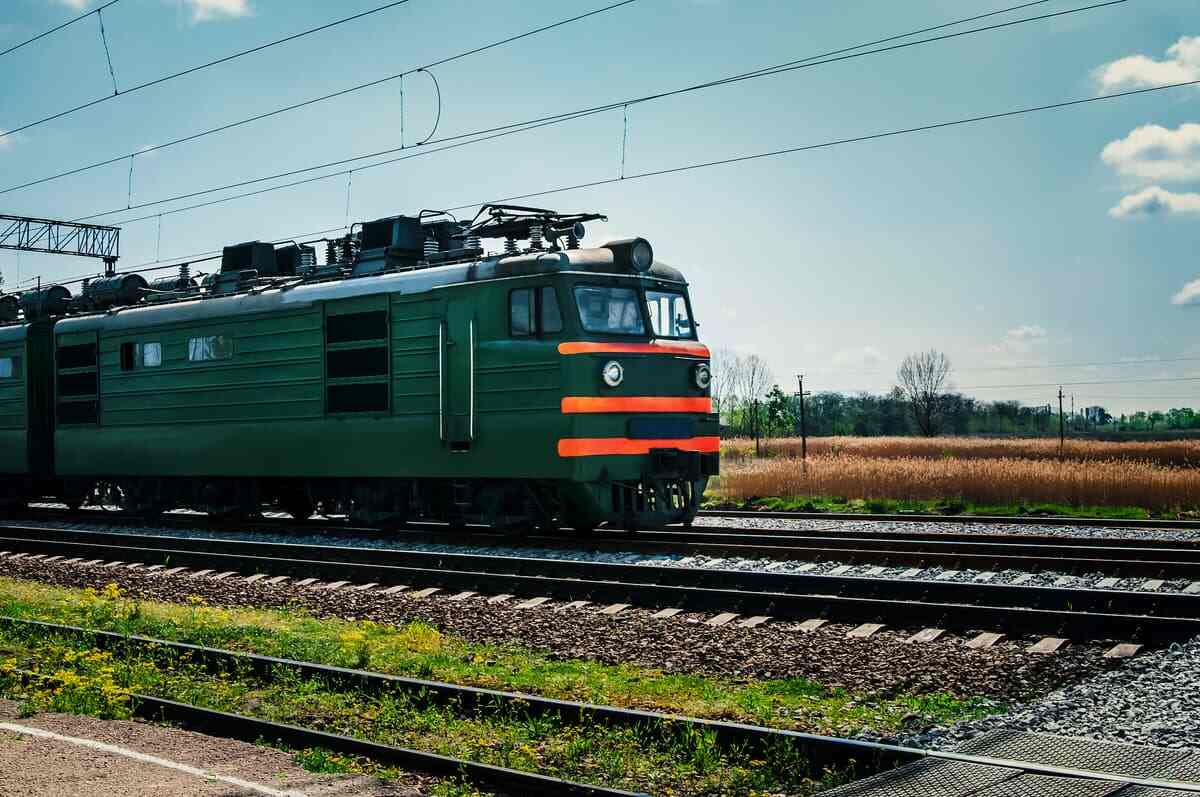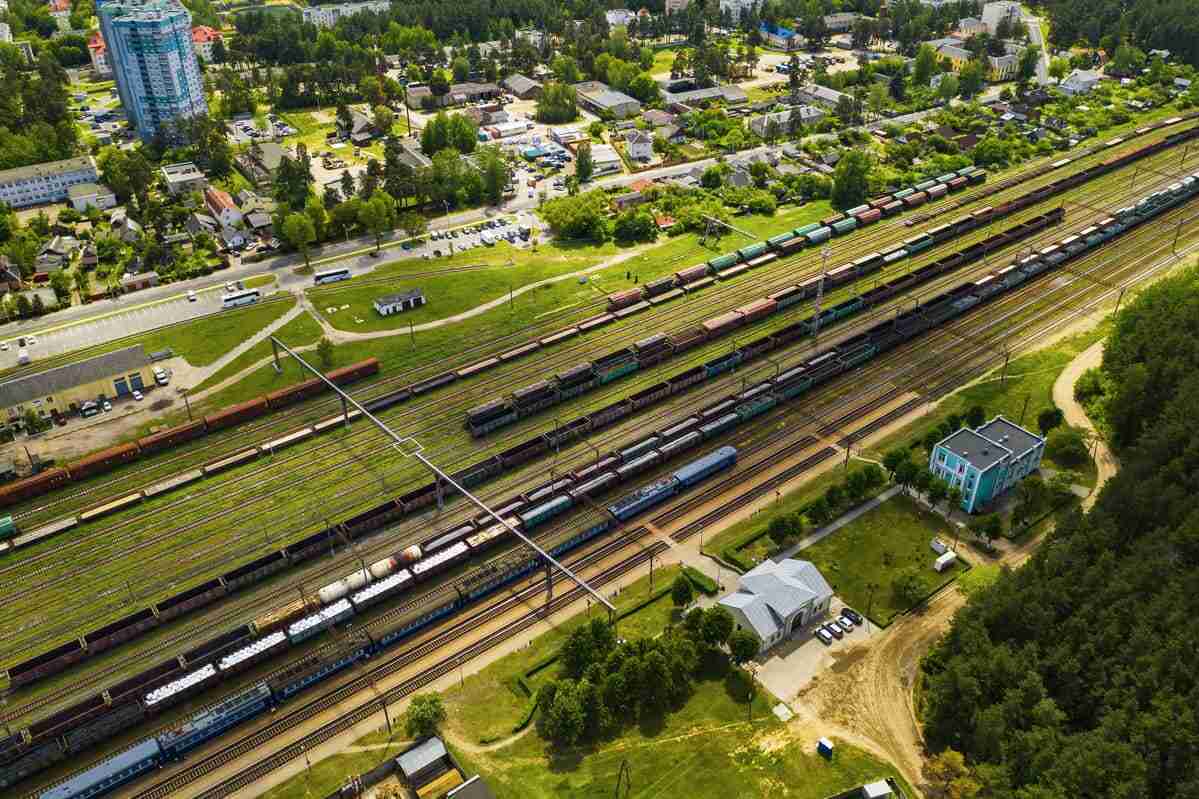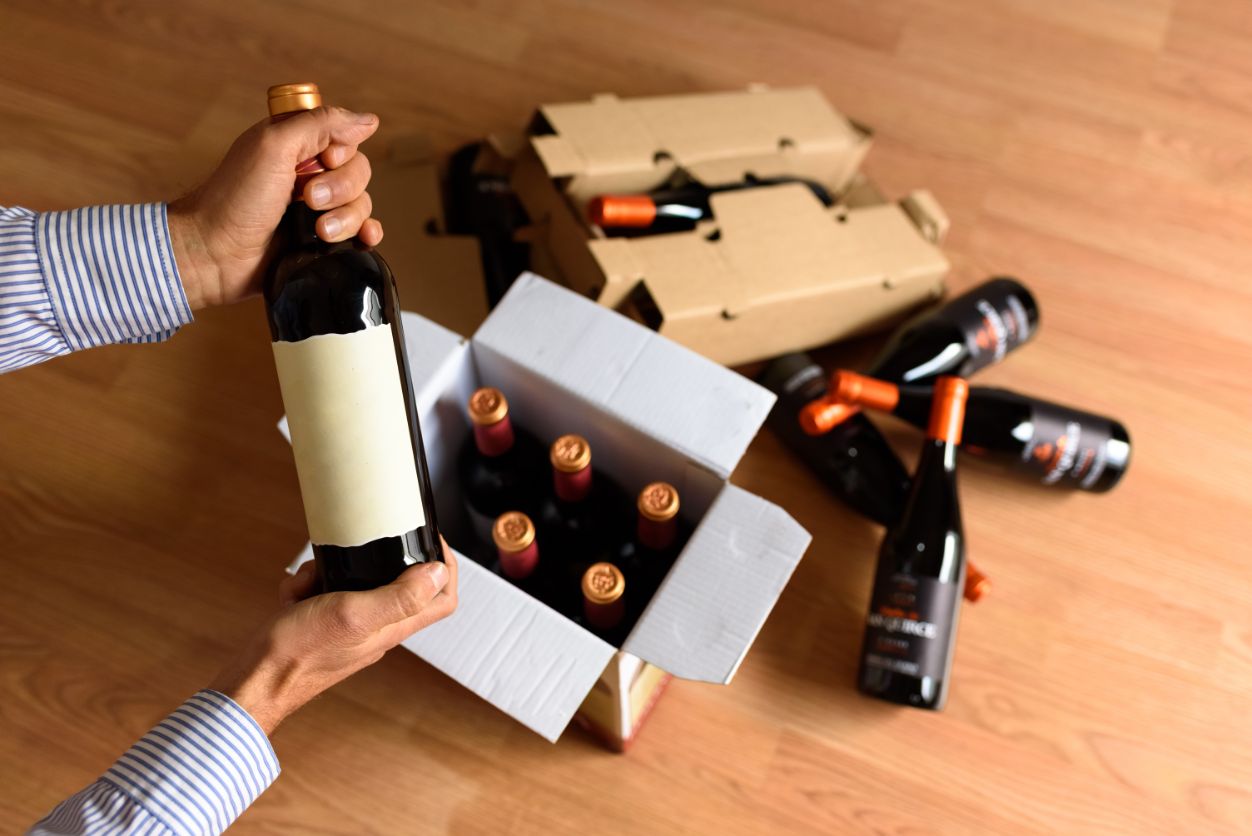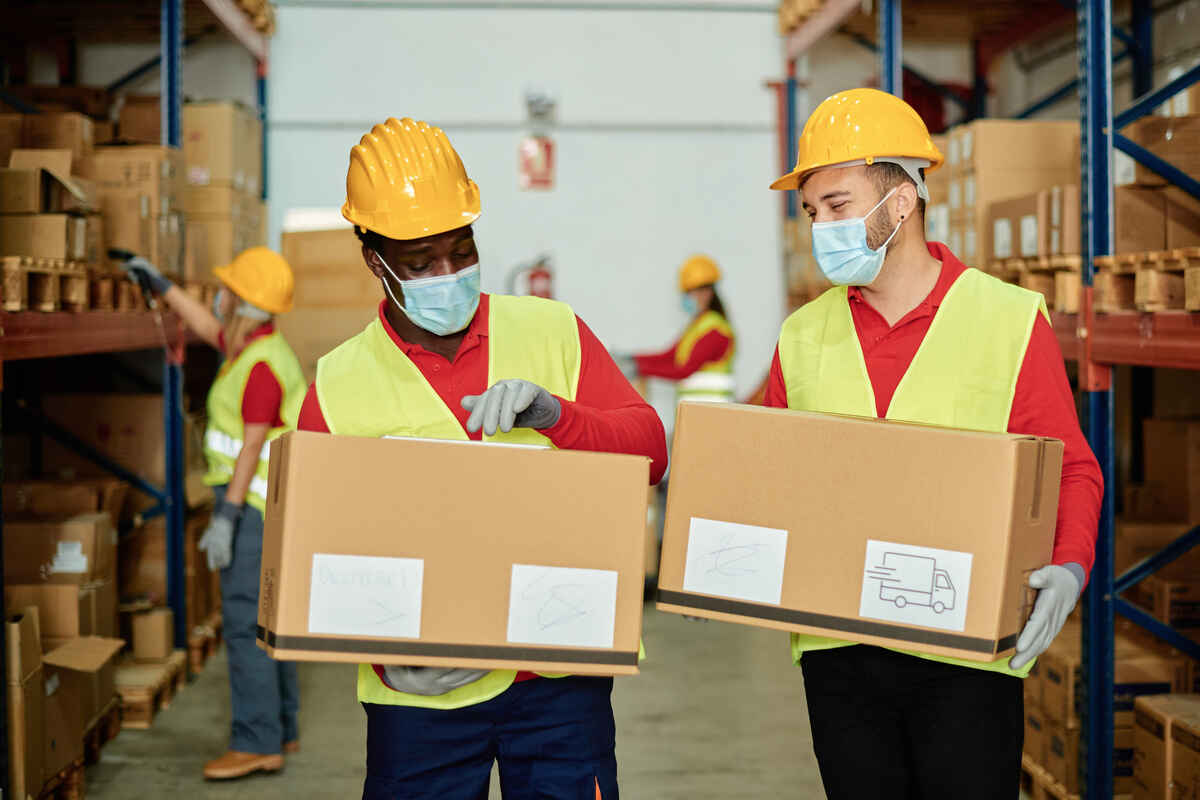What You Need to Know About Rail Freight


Rail freight is an often underrated and overlooked mode of transportation. That’s unfortunate since rail shipping is one of the most reliable, safe, and efficient types of transport. Although it isn’t always possible to carry loads from the initial to the final destination, using rail transport as a part of an intermodal strategy can benefit many businesses.
Besides, it is the greenest shipping alternative as freight trains leave the smallest carbon footprint compared to other transportation options.
Discover what you need to know about this efficient and effective mode of shipping below.
What Is Rail Freight?
Rail freight refers to using trains and railroads to transport cargo on land. It can be used for shipping goods all or part of the way between the shipper and the final destination.
How Do Freight Trains Work?
America’s freight railroads move more freight more safely and efficiently thanks to steady and notable spending on infrastructure, technology, and equipment.
Modern trains are powered by 200-ton locomotives equipped with supercomputers capable of processing a billion data points per second. The technology used throughout the rail network, such as smart sensors and drones, ensures equipment and infrastructure stay safe.
Specialized software improves rail operations, while green innovations keep freight rail’s carbon footprint small.
What Do Freight Trains Carry?
Freight trains can carry anything from an airplane and car parts to wheat and grain. There are several types of cars for different freight, and each serves a specific purpose. We explain each of them below.
Boxcar
The boxcar is one of the most famous railcars. It can carry anything from paper to televisions and everything in between. Typically, boxcars have side doors for easy access during unloading to help forklifts or other vehicles empty the boxcar.
Recently, boxcars use has declined because of the increase in intermodal traffic. That’s easier since the containers don’t need to be unloaded until they arrive at their destination.
In addition, reefers (refrigerated boxcars) transport perishable products such as frozen food, dairy products, vegetables, etc.
Tanker Car
Tanker cars can carry anything from corn syrup to natural gas. Often, a placard is placed on the side when a tanker is transporting hazardous substances. Crude oil is one of the most common types of tanker commodities. These loads usually consist of more than one hundred cars and operate as a unit train.
Centerbeam Car
A centerbeam car typically carries lumber, but it can haul other building materials, such as drywall and wallboard. Loading this type of car can be an arduous task since it requires the car to have equal weight on both sides to avoid overturning. It also needs a matching load on both sides.
Most of these cars are separated by a Vierendeel Truss or diagonal beams for support and securing the load during movement.
Hopper Car
A hopper car has myriad uses and can carry various products. There are two types of hopper cars - the covered hopper and the open-top hopper.
The covered hopper carries commodities like wheat and grain. These cars are completely enclosed to protect items that need to stay away from elements. They are loaded from the top and unloaded from the bottom. This type of car can be in a unit train, but you can find them among other commodities in a mixed freight.

The open-top car can carry anything from iron ore to coal. Often, hopper cars ship these substances in unit trains. They are loaded from the top and can be unloaded from the bottom or enter a rotary dumper that tips the car over, emptying it.
Flatcar
Flatcars transport things like construction equipment and airplane parts. Many flatcars consist of a metal frame with wooden panels on top. They come in different forms and serve various purposes. Some are depressed in the center so that they can carry heavy loads, such as electrical transformers.
These types of flatcars can often haul over 100 short tons and have up to eight axles. Bulkhead flatcars have two bulkheads at the ends to secure the load. These ends prevent the cargo from moving and hanging off the car. They usually carry wood.
Intermodal Well Car
The intermodal well car and intermodal transport became popular in the late twentieth century. This mode of transportation is pretty versatile and offers the convenience of not having to unload the product until delivered to its destination.
Intermodal trains can stretch for miles and are very common on rail lines throughout North America. These containers can travel on ships, trucks, and trains virtually anywhere. You can see many intermodal loading facilities near waterways because the containers are unloaded from the ships and put on trains or trucks.
The well car is built for a container to sit lower than the initial height of the car so another container can be stacked on top. These containers are connected by inter-box connectors, usually having four in each corner of the car.
Autorack Car
Autorack cars carry vehicles to dealerships for delivery. They are often double-tiered and can transport any vehicle, from a small car to a large van. Vehicles can be loaded on either side and are driven to their tier on the autorack by ramp. Usually, these cars are hauled in unit trains but can be seen on mixed freights.
Older versions had an open-air design. However, the vehicles often ended up damaged because of vandalism. That’s why now they are typically enclosed on North American railways.
How much Does Rail Freight Cost?
Rail freight is a cost-efficient shipping option, leaving money on the side to cover other costs and build a more agile supply chain. That can also have a positive effect on cost parameters and capital binding.
For example, the differential in cost between truck freight and rail transportation is $0.105 per ton-mile. Reducing truck transport and opting for the optimal rail transload facility can help increase expense savings through rail.
Rail Freight and Intermodal Strategy
Intermodal is the use of two or more freight transporting modes. When combining rail and road, trains are utilized for the long-haul chunk of the transport. Trucks are used to ship loads from the origin to the terminal and then from the terminal to the recipient, known as drayage.
Using rail freight as part of an intermodal strategy has many benefits, which you can discover below.
Rail Freight Is Eco-Friendly
Given the current state of our environment, caring for it is imperative. From an ecological point of view, rail freight is a great transport alternative compared to air, sea, and road freight. The biggest advantage of rail freight is the reduction of CO2 emissions. Compared to other transport modes, rail freight leaves the smallest carbon footprint.
For example, air freight consumes 138 tons of CO2, and the combination of air and sea consumes approximately 76 tons of CO2. However, rail freight consumes only 5 tons of CO2 over the same distance. That’s why, now more than ever, rail freight deserves more attention.
Rail Transportation Is Safe and Efficient
Railway safety has notably improved over the past couple of decades. Now, rail transportation is one of the safest shipping options. With steady investments in railway infrastructure, routings, tracks, terminals, and border crossing stations, there’s a significant enhancement in the performance of rail freight.
Moreover, GPS tracking in trains prevents theft and losses, protecting the goods in transit. Since carriers can locate their customers’ shipments and follow up on milestones, they can deliver information on container position and detect if something unexpected happens during the transportation.
Rail Freight Is Fast and Reliable
Rail freight is a fast and reliable shipping mode with shorter lead times when compared to sea freight. Although not always possible, there are many situations when rail freight is a more optimal choice than other transport modes.
For instance, one of the biggest challenges for companies with production in China is the long lead times to northern Europe when shipping by sea. Sea shipping from China to that part of Europe typically takes around seven weeks.
With rail freight, the shipping times can be cut in half, significantly reducing the lead time. Shorter lead times can make it easier to predict business operations and costs, positively impacting capital binding.
In addition, rail freight transport is a punctual mode of transport. Compared to sea and road freight which can be subjected to bad weather and congestion, not much can hinder the rail path, reducing the risk of unexpected delays.
Are There any Drawbacks of Rail Transportation?
Intermodal containers experience a lot of movement during transit that can damage their contents. There’s a risk of a denied claim if cargo isn't appropriately blocked and braced by rail standards.
Rail Freight Shipping Can Be Your Optimal Choice
Rail shipping has many benefits and very few drawbacks. Apart from being extremely reliable, rail freight is also cost-effective. On top of that, it leaves the smallest carbon footprint compared to other shipping modes.
With rising challenges in sustaining our environment, it’s vital to do everything we can to reduce CO2 emissions and reduce the impact of global warming. For those reasons, using rail freight as a part of intermodal strategy can be an optimal choice for many companies that wish to see improvement in our environment.
Unival Logistics provides end-to-end logistic solutions and we always choose optimal routes, so that your packages arrive on time and cause the least amount of pollution. You can also take out full-value insurance for high-value goods, track your packages in real-time, and integrate your business with Unival’s API.
If you need a logistics partner that combines traditionally effective methods of transport with modern solutions, contact Unival Logistics.
Latest blogs
Can You Ship Alcohol and How? US Guide to Alcohol Shipping
Tue, Dec 23rd 2025, 01:37
 Continue Reading →
Continue Reading →
Top 5+ Documents Required for Domestic Shipping: A Full Paperwork Guide
Mon, Dec 1st 2025, 02:05
 Continue Reading →
Continue Reading →
Categories
defaultCall Us Today
Get premium full-value shipping insurance at affordable rates and be sure your parcels are 100% safe during transport. Work with a logistics powerhouse - get in touch with us today.
213-368-3444
Contact Us
Want a peace of mind when shipping valuable packages? Our experts are happy to ansver any questions you may have and provide you with a tailored soulution that meets your unique shipping needs. Email us today and ship your luxury items with ease!



